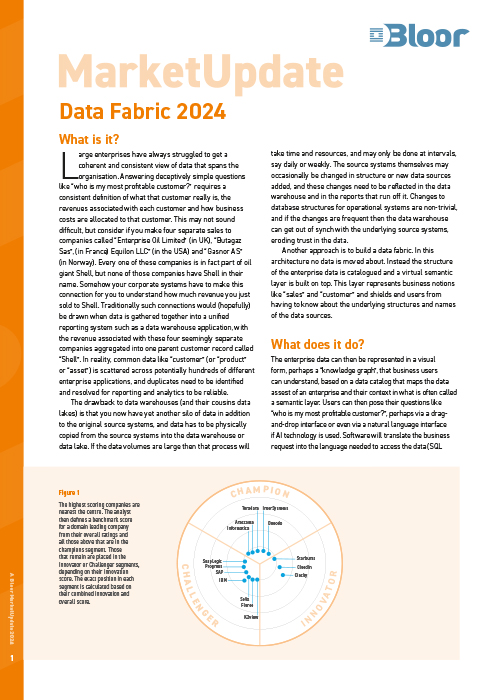Data Fabric
Published On 14th, Jun 2024 Content Copyright ©
2024 Bloor, All Rights Reserved.
2024 Bloor, All Rights Reserved.
Classification
Bloor’s analysis of the Data Fabric market, assessing the leading vendors and showing you who the innovators, challengers and champions are.
Research By
Related Technologies
Related Companies
Connect with Us
Ready to Get Started
Learn how Bloor Research can support your organization’s journey toward a smarter, more secure future."
Connect with us Join Our Community


